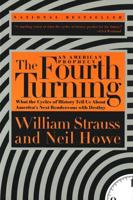Publisher's Synopsis
*Includes pictures
*Includes contemporary accounts
*Includes online resources and a bibliography for further reading
Among all the world's capitals, few contain a governmental seat of power as imposing or impressive as the Kremlin in Moscow, Russia. While the name itself is often used as a shorthand to refer to the Russian government, and many people associate it with Red Square, the Kremlin is actually a fortress inside the heart of Moscow, replete with everything from ramparts and towers to decadent churches.
The history of Russia is vast and winding, so it should come as no surprise that the same can be said for the Kremlin. Construction on the site was taking place by the 12th century, and by the 14th century it was imposing enough to withstand sieges. Ivan the Great added artistic flourishes to the Kremlin during the Renaissance, Catherine the Great had a residence built inside it during the 18th century, and Napoleon severely damaged the Kremlin in the course of ordering its destruction during the invasion of Russia in 1812. Even as Russian dynasties came and went, and a transition to the Soviet Union was made, the Kremlin remained, even as constant changes took place within it.
For over two centuries, the capital of America has been located in Washington, D.C., and among all the iconic landmarks and monuments associated with the city, nothing provides symbolism quite like the White House, the primary residence and office of the president. The instantly recognizable exterior and its location have ensured that the White House is associated as the main seat of power in the world's most powerful country.
At the same time, the majesty of the White House and its tranquil setting belie its rather chaotic history, which includes being burned down by the British during the War of 1812, suffering damage during wild inaugural balls, and undergoing countless renovations. As Brian Kelly, author of Best Little Stories from the White House: More Than 100 True Stories, put it, "You could almost argue, in fact, that it wasn't finished, truly, until yesterday. And...who knows what they may do to it tomorrow, as it has undergone so many changes, additions, improvements, and even subtractions in its two-hundred-year history. The fact is, the White House we see today is not the White House of yore."
Just as the interior has changed, the use of the White House has also changed considerably over time. While the White House was always intended to serve as the president's home and a place to receive dignitaries, in the early 19th century, the White House was open to the public, to the extent that people could simply call on the president. Perhaps most notably, the White House has historically been open to public tours, albeit with exceptions made based on security issues, wars, and budget issues. The availability of the public to tour the White House is a strong reminder that while it may house the president during his term, the place ultimately belongs to the people.
The White House and the Kremlin: The History and Legacy of the World's Most Famous Official Residences looks at the history of both seats of power, how they've changed over time, and what's inside them. Along with pictures of important people, places, and events, you will learn about the White House and Kremlin like never before.








